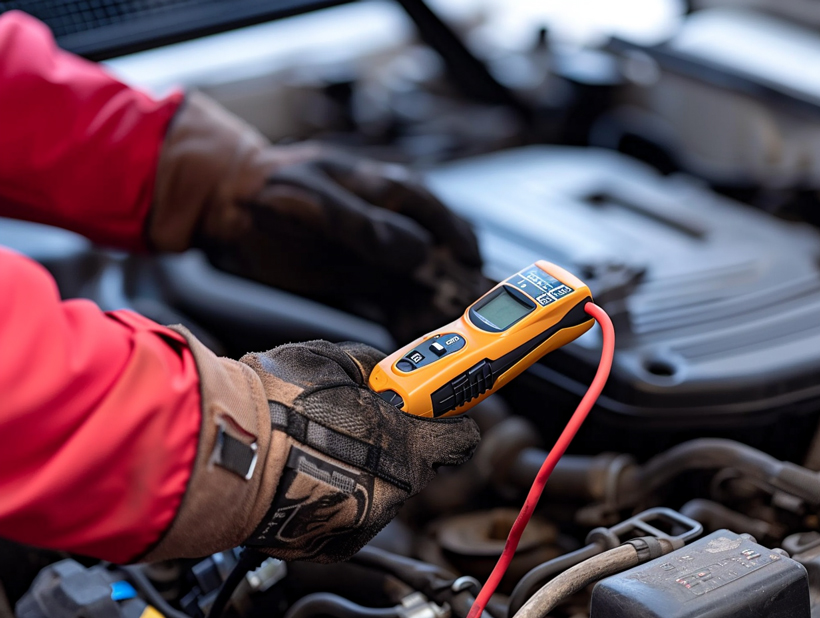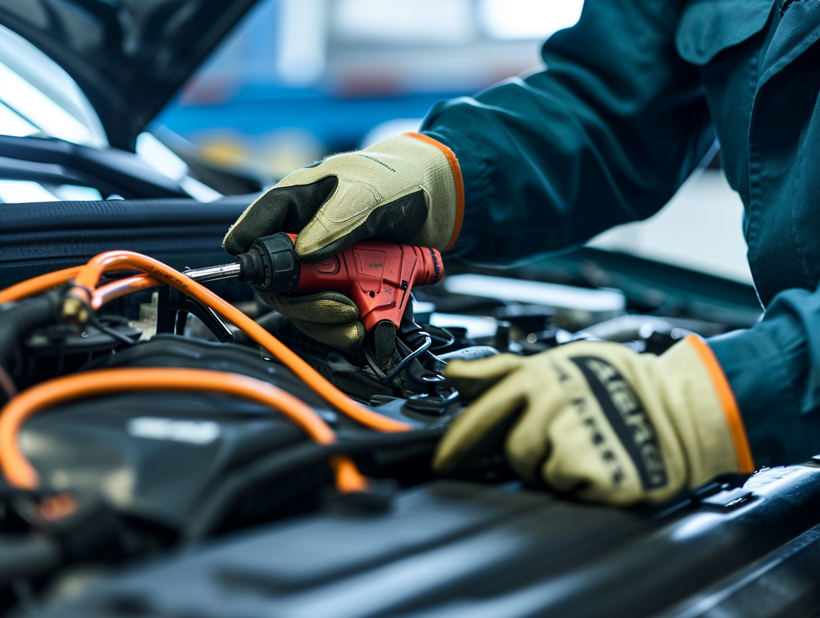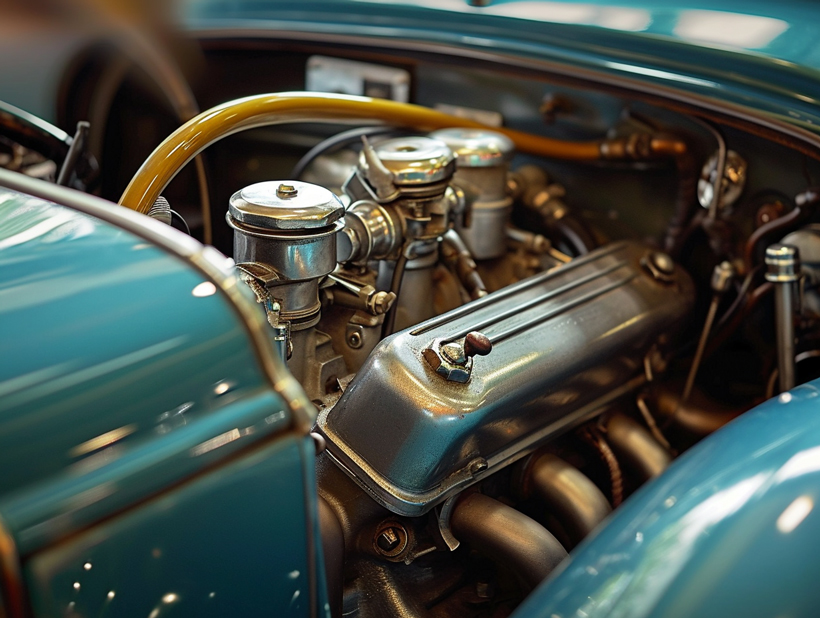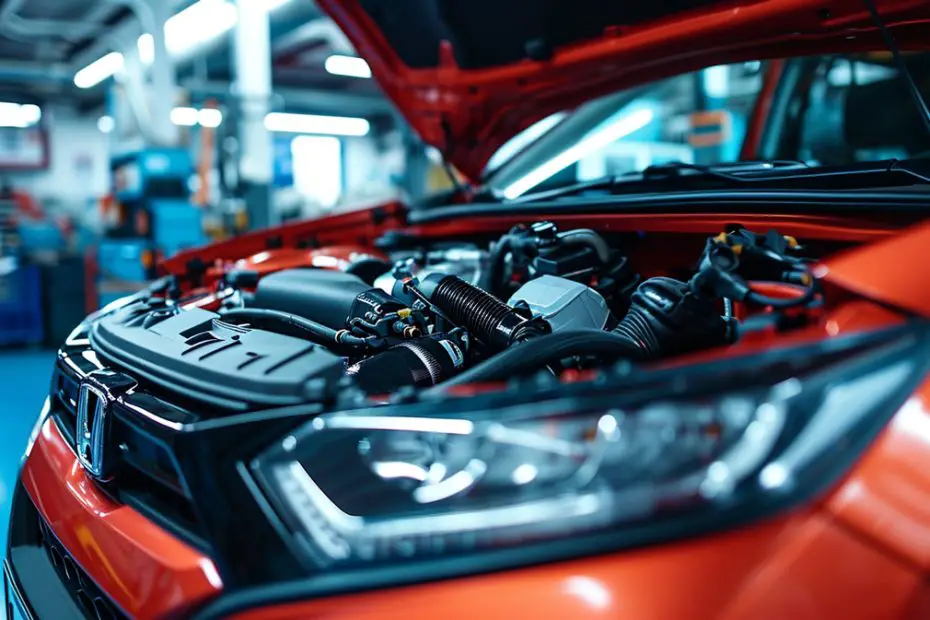When we step on the gas pedal, we expect our car to respond with a smooth and steady increase in speed. But what happens when it doesn’t? Engine hesitation under acceleration is not just frustrating; it’s a sign that something’s amiss under the hood.
We’ve all been there‚ suddenly our vehicle stutters, and we’re left wondering why. It’s a common issue that can stem from a variety of causes, each affecting your car’s performance. Don’t worry; we’re here to delve into the potential culprits and offer solutions to get you back on the road with confidence.
Common Causes of Engine Hesitation
When we notice our car doesn’t accelerate as it should, we’re often dealing with engine hesitation. This can be due to a range of issues that affect a car’s performance. We’ll explore some of the most common causes that we should be aware of.
Dirty Fuel Injectors: Over time, fuel injectors can build up deposits which impede their efficiency, leading to poor acceleration and engine performance.
- Clogged Air Filters: Just like us, cars need to breathe. A clogged air filter restricts airflow to the engine, affecting the air-to-fuel ratio which is crucial for optimal performance.

Faulty Spark Plugs: One of the vital components for engine ignition, spark plugs that are worn out can’t produce the necessary spark to ignite the fuel-air mixture properly.
- Worn or Faulty Sensors: Modern cars come equipped with an array of sensors. A malfunctioning mass airflow sensor or oxygen sensor can send incorrect data to the car’s computer, leading to engine hesitation.
Issues with the fuel system are also a significant cause of acceleration problems. Let’s break down these problems further:
| Fuel System Issues | Effect on Engine Performance |
|---|---|
| Clogged Fuel Filter | Restricts flow of fuel causing sporadic hesitation |
| Low Fuel Pressure | Leads to insufficient fuel delivery to the engine |
| Faulty Fuel Pump | Inconsistent fuel supply to the engine |
Beyond these, we must consider other elements like a problematic exhaust system, which may include a failing catalytic converter or exhaust leaks. Both of these can restrict the flow of exhaust gases, ultimately impacting engine power.
Transmission issues also play a part. When the transmission doesn’t shift gears smoothly, we might experience hesitation as a symptom of deeper problems within the gearbox or clutch system.
By staying attuned to the performance of our vehicle and addressing these common issues promptly, we maintain the health of our car’s engine and ensure our road safety. Regular maintenance checks can help diagnose these problems early, keeping our drives smooth and hassle-free.
Fuel System Issues and Solutions
Fuel system issues remain among the top culprits when it comes to engine hesitation under acceleration. A properly functioning fuel system is crucial for delivering the right mix of air and fuel to the engine. Let’s delve into some common fuel-related problems and their fixes.

Dirty Fuel Injectors
Over time, fuel injectors can become clogged with debris, leading to a disruption in the flow of fuel. This can result in a lean air-fuel mixture and cause the engine to hesitate upon acceleration.
- Solution: Regular cleaning or replacement of fuel injectors can prevent this issue.
Faulty Fuel Pump
A fuel pump in need of service can fail to supply enough fuel to the engine, especially during high-demand situations like acceleration.
- Solution: Inspecting and replacing the fuel pump will ensure consistent fuel delivery.
Clogged Fuel Filter
The fuel filter captures impurities in the fuel before they can reach the injectors. A clogged filter restricts flow, starving the engine of fuel.
- Solution: Replace the fuel filter at intervals recommended by the vehicle’s manufacturer.
Low Fuel Pressure
Proper fuel pressure is vital for the injectors to deliver the correct amount of fuel. Low pressure can be due to various reasons including a weak fuel pump, clogged fuel filter, or problems with the pressure regulator.
- Solution: A fuel pressure test can diagnose the issue, followed by repair or replacement of the faulty component.
Key Takeaways for Maintaining the Fuel System:
- Monitor: Stay aware of changes in your car’s performance.
- Maintain: Follow the manufacturer’s service schedule.
- Test: Have fuel pressure and other system functions tested regularly.
By addressing these fuel system issues efficiently, we can mitigate engine hesitation and improve overall performance. It’s essential to tackle these problems early on to prevent further complications and ensure a smooth, responsive drive. Regular maintenance not only extends the lifespan of the car but also contributes to safer driving experiences.
Ignition System Problems and Fixes

When tackling engine hesitation, it’s crucial to consider the ignition system. This system’s primary role is to ignite the fuel and air mixture within the cylinders. Issues with the ignition system can lead to poor engine performance and hesitation during acceleration.
Ignition Coils and Spark Plugs
Ignition coils and spark plugs are central to the proper functioning of the ignition system. Over time, spark plugs can become fouled or worn, which leads to weak spark generation and thus, misfires. Similarly, failing ignition coils may not provide the necessary electrical charge. Here’s what we can do to address these concerns:
- Replace Spark Plugs: Regularly check and replace old or fouled spark plugs.
- Check Ignition Coils: Inspect coils for signs of wear or damage and replace as needed.
Distributor Cap and Rotor
Vehicles with a traditional distributor setup have additional components to consider: the distributor cap and rotor. These parts can accumulate wear and corrosion, interrupting the electrical flow. We inspect and replace these as part of routine maintenance:
- Inspect the Distributor Cap: Look for cracks or carbon tracks.
- Examine the Rotor: Replace if showing signs of burning or pitting.
Timing Issues
Incorrect ignition timing can also cause engine hesitation. If the spark is generated too early or too late in the combustion cycle, the engine won’t run efficiently. Timing issues may stem from a malfunctioning timing belt or chain. The solution often involves:
- Checking Timing Belt or Chain: Ensure it’s correctly installed and tensioned.
- Using Diagnostic Equipment: Time the ignition correctly with specialized tools.
By maintaining these components of the ignition system, we ensure a more responsive and smooth-running engine. Regular checks can prevent the headaches caused by engine hesitation and, combined with proper fuel system maintenance, can keep our vehicles in top shape for the long haul.
Remember, it’s not just about replacing parts; diagnostic skills are paramount for pinpointing the root causes. Utilizing diagnostic tools and adhering to scheduled service intervals significantly enhances the reliability and performance of our vehicles. With diligent care, we maintain the orchestration of perfectly-timed sparks that brings the heart of our cars to life‚Äîa symphony of precision and power.
Air Intake and Exhaust System Troubleshooting
When tackling engine hesitation, it’s crucial to consider the air intake and exhaust system, both of which must be in peak condition to support smooth acceleration. Let’s explore some common issues and effective solutions.
Dirty or Clogged Air Filters: One of the most straightforward problems we might encounter is a dirty air filter, which can impede airflow to the engine.
- To resolve this, we simply replace the air filter, ideally, every 12,000 to 15,000 miles.
Malfunctioning Mass Airflow Sensor (MAF): The MAF measures the amount of air entering the engine and is vital for the air-fuel mixture.
- Signs of a faulty MAF include rough idle and a decline in fuel economy. Cleaning or replacing the MAF sensor can restore proper function.

Vacuum Leaks: Leaks in the vacuum system create an imbalance in the air-fuel ratio, leading to performance issues.
- We look for hissing sounds, or use a smoke machine to detect leaks, and then repair or replace damaged lines or gaskets.
Exhaust System Obstructions: A clogged catalytic converter or damaged exhaust pipes restrict exhaust flow, causing back pressure and reduced performance.
- To address this, we check for a clogged converter and consider replacing it or inspecting the exhaust pipes for physical damage.
Oxygen Sensors and EGR Valves: Worn oxygen sensors and faulty Exhaust Gas Recirculation (EGR) valves affect engine responsiveness and emissions control.
| Component | Symptom | Potential Solution |
|---|---|---|
| Oxygen Sensor | Poor Mileage | Replace Sensor |
| EGR Valve | Rough Idling | Clean or Replace Valve |
Ensuring that these components are functioning properly can markedly improve engine hesitation under acceleration. Regular checks as part of our vehicle maintenance routine will prevent these issues from developing into larger problems. Through diligent inspection and timely intervention, we can maintain the impeccable performance of the air intake and exhaust systems, thereby supporting the engine’s need for a precise balance of air and fuel.
Other Potential Culprits
In our journey to unravel the mystery behind engine hesitation, we can’t overlook the ignition system. Much like a detective piecing together clues, we know that a car’s performance is the sum of its parts. Ignition system issues are often masked bandits in the case of engine hesitation.
- Worn out ignition coils can’t provide the necessary spark to ignite the air/fuel mixture.
- Distributor cap problems, which may not be as common in modern cars with direct ignition systems, yet still a viable suspect in older models.
- Ignition module failure leads to inconsistent sparking and engine performance hiccups.
After delving into the ignition system, it’s time to consider the timing belt or chain. Should these critical components be out of sync or worn, the engine will struggle to run smoothly. Their untimely demise can lead to:
- Erratic engine behavior
- Reduced horsepower
- Increased fuel consumption
We must also turn our attention to the fuel quality. Bad or contaminated fuel can wreak havoc on an engine’s performance. Water in the fuel, ethanol content higher than what the engine can handle, and just plain old dirty fuel ‚Äì these culprits can induce engine hesitation.
Lastly, let’s not ignore the electrical connections. Corroded battery terminals or poor ground connections form subtle gremlins that disrupt electrical flow, throwing sensors off their game and leading to power issues.
| Issue Area | Specific Problem | Resulting Symptom |
|---|---|---|
| Ignition System | Worn Ignition Coils | Engine Misfires |
| Timing Components | Misaligned Timing Belt | Erratic Engine Behavior |
| Fuel Quality | Contaminated Fuel | Hesitation During Acceleration |
| Electrical Connections | Corroded Battery Terminals | Poor Engine Performance |
By examining these additional potential culprits, we further refine the diagnostic process and inch closer to restoring that seamless acceleration. Regular maintenance, keen observation, and a timely response to the signs can guide us towards smooth driving experiences.
Conclusion
We’ve explored the intricacies of engine hesitation and the importance of addressing these issues promptly. Remember, regular maintenance is key to preventing these performance problems. By staying vigilant and responding quickly to any signs of trouble, we can keep our vehicles running smoothly and avoid the frustration of unexpected breakdowns. Let’s take these insights and ensure our cars are always ready to perform when we hit the accelerator.
